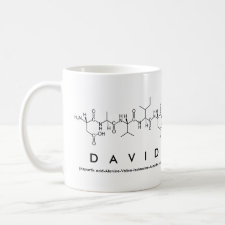
Authors: Dhruv H, Pepalla R, Taveras M, Britt DW
Article Title: Protein insertion and patterning of PEG-bearing Langmuir monolayers.
Publication date: 2006
Journal: Biotechnology Progress
Volume: 22
Issue: (1)
Page numbers: 150-155.
DOI: 10.1021/bp050173y
Abstract: Protein adsorption to multicomponent lipid monolayers is presented as a means of inducing protein-specific binding pockets or imprints in membranes. Adsorption of the acidic protein ferritin to Langmuir monolayers of cationic dioctadecyldimethylammonium bromide (DOMA), nonionic methyl stearate (SME), and poly(ethylene glycol) (PEG) bearing phospholipids is investigated as a model system. The number, size, and distribution of protein binding pockets (domains of SME and DOMA in a PEG matrix) are defined by controlling the molar ratios, miscibility, and lateral mobility of the lipids. Protein patterning of binary SME:DOMA monolayers is limited by protein-protein interactions that hinder desorption to regenerate the imprint site. The incorporation of PEG bearing phospholipids as a third lipid component provides a successful approach to prevent protein surface aggregation during imprinting. Atomic force microscopy reveals a user-defined distribution of protein molecules where protein-protein interactions on the monolayer are eliminated, thus facilitating protein desorption and regeneration of the protein binding pockets.
Template and target information: protein, ferritin



Join the Society for Molecular Imprinting

New items RSS feed
Sign-up for e-mail updates:
Choose between receiving an occasional newsletter or more frequent e-mail alerts.
Click here to go to the sign-up page.
Is your name elemental or peptidic? Enter your name and find out by clicking either of the buttons below!
Other products you may like:
 MIPdatabase
MIPdatabase









